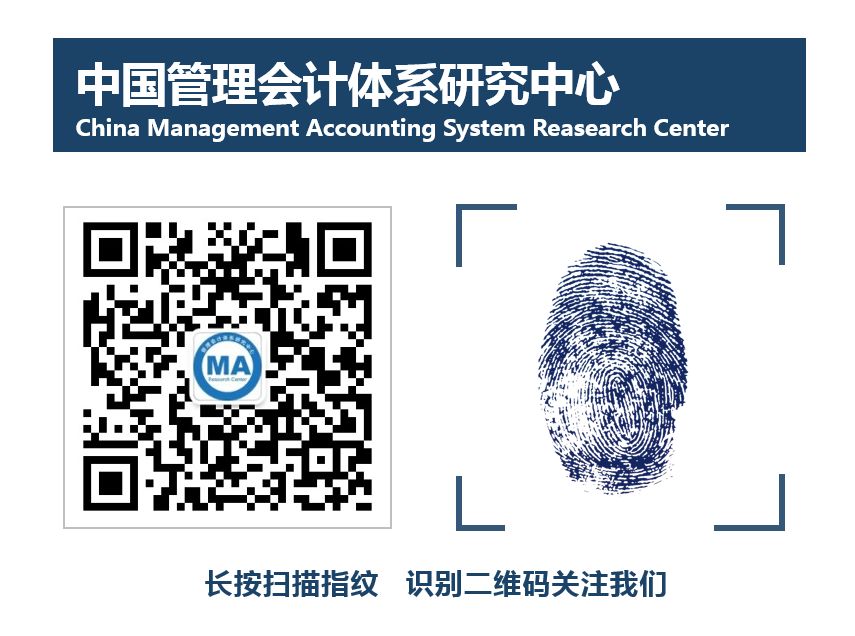Huang Jizhang,currently an associate professor at the Accounting School of Shanghai University of Finance and Economics. He mainly teaches the ACCA Strategic Business Leadership (SBL) course. Over the past five years, he has hosted one National Natural Science Foundation project, participated in three National Natural Science Foundation projects, and one other provincial-level research project, and has published papers in internationally renowned journals such as the Journal of Management Accounting Research and the Journal of Accounting, Auditing and Finance.
Pan Fei,senior professor at the Accounting School of Shanghai University of Finance and Economics, doctoral supervisor, and director of the Research Center for Management Accounting System in China at Shanghai University of Finance and Economics. He is a council member of the Chinese Accounting Association, a management accounting consulting expert for the Ministry of Finance, and vice president of the Shanghai Cost Research Association. His main research areas include management accounting issues in Chinese enterprises, having hosted eight national and provincial-level projects, published over 40 papers, and authored important works such as “Typical Case Studies of Management Accounting Applications and Developments,” “Management Accounting Case Studies Based on Value Management,” and “System Design for Activity Management.” He has won multiple awards, including the Shanghai Talent Cultivation Award, National Advanced Accounting Workers, the Fifth Shanghai Teaching Excellence Award, and the Shanghai Excellent Teaching Team Award.
1. Introduction
With the rapid development of technology, platform economy and IoT technology have rapidly risen in various industries. The platform economy integrates internal and external resources of enterprises by establishing an open and collaborative ecosystem, achieving more efficient resource allocation and value creation. The widespread application of industrial internet and IoT technology allows enterprises to obtain and analyze massive data in real-time, enhancing the accuracy of decision-making and the flexibility of management. These technologies not only change traditional business models but also pose new requirements and challenges for enterprise management.
In this context, Haier, as a pioneer of the IoT ecological platform, has proposed the innovative concept that “products are replaced by scenarios; industries are covered by ecosystems.” This concept profoundly reveals the important role of IoT technology in management innovation, marking Haier’s entry into the strategic phase of ecological platforms. The ecological platform strategy aims to transform the originally clear and closed organizational structure into a flat and open platform ecosystem (Eisenmann, 2007; Chen Weiru and Xu Weiling, 2014). Under the ecological platform strategy, every employee within the platform can become an entrepreneur, actively responding to market and customer needs by selecting the most suitable platform partners or resource support, turning various ideas into reality. The advantage of this strategy lies in its great flexibility and collaboration, which can effectively stimulate the enthusiasm of all participants on the platform and rapidly expand the scale and influence of the platform.
It is noteworthy that manufacturing enterprises face many difficulties and challenges in the process of transforming and upgrading to an ecological platform strategy. Specifically, the value creation activities of manufacturing enterprises, including research and development, design, production, sales, and after-sales, form a complete closed-loop chain, which poses high demands on the cooperation and coordination capabilities between participants. Therefore, how to effectively coordinate the independent units within the ecological platform, implement effective incentives, and promote collaboration becomes the key to the success of the ecological platform strategy for manufacturing enterprises. To explore this issue in depth, this article takes the strategic transformation of Haier Group’s IoT ecological platform as an example, focusing on its unique “Chain Group Contract” system, and discusses the application of management accounting in the strategic transformation of manufacturing enterprises’ ecological platforms.
For a long time, Haier has continuously explored innovations in management methods to match its ecological platform strategy. In 2012, Haier broke the constraints of the traditional hierarchical structure in its organizational structure by establishing a “platform + micro” model, truly decentralizing power to frontline employees. Each micro-unit, as an autonomous operational unit attached to the platform, focuses on a specific business or production operation link, collaborating with other micros within and outside the platform through a freely chosen manner. The cooperative closed loops formed between micros for production and operation are called ecological chain micros, abbreviated as chain groups; correspondingly, the chain group contract is a type of contract design formed by the company to effectively incentivize, constrain, and coordinate each node of the chain group, with the core goal of enabling each chain group team to respond quickly to user needs and achieve iterative user experiences. Although existing research has addressed the transformation of enterprises’ ecological platform strategies (Zhang Xiaoning, 2014; Zhang Xiaoning and Zhao Jianbo, 2015), there is still a lack of systematic theoretical exploration and empirical analysis of management accounting practices under the background of IoT and blockchain technologies. In light of this, this article uses the analysis framework of “organizational environment and strategy – organizational structure and processes – organizational control” and applies grounded theory’s case analysis method, focusing on Haier Group as a typical enterprise, highlighting the new management tool of chain group contracts under the IoT ecological platform, and analyzing the institutional logic and operational mechanism contained in this contract model from the perspective of management accounting.
The significance of this case study mainly lies in two aspects. Firstly, this article expands the research on the transformation of enterprise ecological platforms into the field of management accounting through the case of Haier’s chain group contract. Ecological platforms have considerable economic importance (Stabell and Fjeldstad, 1998), and the ecological platform strategy is also one of the important topics in the current business field. However, existing research on ecological platform strategies mostly focuses on economics and strategic management. By summarizing Haier Group’s successful experience in implementing management accounting innovation within the IoT ecological platform, this article introduces management accounting thinking into the research on ecological platform strategic transformation, further expanding and enriching the academic community’s overall understanding of enterprise ecological platform strategic transformation.
Secondly, this article introduces the pioneering exploration of leading enterprises in the IoT era in the innovation of management accounting tools, increasing the academic community’s insights into cutting-edge management methods in the real world. Driven by industrial internet and IoT technologies, traditional management models are undergoing profound changes. Mr. Zhang Ruimin’s assertion that “products are replaced by scenarios; industries are covered by ecosystems” profoundly reflects the direction of this change. This article’s theoretical analysis of the specific operation methods and core effects of Haier’s chain group contract not only helps reveal the essence of this new management tool but also promotes the deep integration of intelligent management tools with traditional management accounting frameworks, providing insights for the future development of management accounting theory and practice.
(1) Ecological Platform Strategy in Manufacturing
This analysis follows the theoretical analysis framework proposed by renowned accounting scholar Jerry Zimmerman and collaborators in the book “Managerial Economics and Organizational Architecture” (Brickley et al., 2015). According to this theoretical framework, the external environment faced by organizations limits their strategic choices. The external environment mainly includes dimensions such as technology, market, and government policy. When any of these dimensions changes, organizations must promptly adjust their strategic plans to adapt to the environment, thereby expanding or maintaining their competitive advantage in the market and avoiding being eliminated by brutal market competition. Based on this, the external environment and organizational strategic direction further determine the corresponding organizational structure and control model. The organizational structure is the internal management framework of the organization, helping it operate effectively and achieve its goals by clarifying responsibilities, powers, and communication channels; the control model mainly includes performance evaluation and reward and punishment systems used to motivate employees and departments within the organization to work according to organizational requirements. When organizational strategies are adjusted due to changes in the external environment, the behavioral requirements for internal employees and departments will inevitably change, leading to corresponding adjustments in the organizational structure and control model.
According to this theory, the emergence of ecological platform strategies in manufacturing has a certain historical inevitability (Zhang Xiaoning, 2014). In the IoT era, tens of thousands of sensors are embedded in various corners of society, forming a new scene of “everything is interconnected.” Unlike traditional mobile internet, the IoT no longer connects only “people” as a single point and can achieve autonomous connections without human intervention, to some extent ensuring the objectivity, timeliness, and comprehensiveness of the content transmitted. The IoT’s attribute of “connecting everything” has triggered a rapid increase in the volume of data.
The massive amount of data generated provides enterprises with the possibility of comprehensively, multi-dimensionally, and in real-time understanding user needs. Enterprises can analyze this data to understand user habits, behaviors, and needs in the usage scenarios of products, and then provide customers with comprehensive “one-stop” solutions centered around these scenarios. Therefore, in the IoT era, enterprises have upgraded from single product competition to scenario solution competition, and manufacturers that can provide more complete solutions to customers will ultimately stand out in fierce market competition. Since a single enterprise often finds it difficult to meet all the needs of customers in a specific scenario, products in the IoT era need to unite to create a scenario or ecosystem, adopting a co-creation and win-win approach. The ecological platform strategy has become a key option for enterprises to consider in the current external economic environment and technological context.
From an economic perspective, the advantages of ecological platform strategies stem from the positive externalities brought about by massive amounts of data (Gawer and Cusumano, 2002; Rochet and Tirole, 2003). Positive externality refers to the beneficial effects an organization has on others or society without incurring additional costs. When a platform accumulates massive data in a particular scenario, it can analyze this data to identify various user needs in that scenario and jointly develop products and design services with various partners based on these needs, providing users with comprehensive solutions. In fierce market competition, the completeness of solutions directly determines the platform’s competitive advantage, and users are often willing to pay a premium for a more complete and comprehensive solution (Su Zhi et al., 2018). At this time, the rich ecosystem constructed by diversified partners endows the platform with stronger competitiveness, allowing the platform and its partners to generate a synergy effect greater than the sum of its parts. The part where the sum exceeds the parts is the positive externality generated in ecological cooperation, and the value it brings is referred to as “ecological value.”
The implementation of ecological platform strategies requires corresponding adjustments to the organizational structure and organizational control. It is not difficult to see that the competitive advantages of ecological platforms largely depend on whether the platform can fully develop and utilize positive externalities. Therefore, in the management of ecological platforms, companies need to address two core issues: first, how to coordinate the behaviors of various participants in the ecological platform to create higher “ecological value”; second, how to reasonably measure the level of “ecological value” and fairly distribute the “ecological benefits” among partners.
(2) Management of Ecological Platform Organizations
Traditional hierarchical organizations often use budgets to solve team collaboration and management issues (Management Accounting Professional Committee of the Chinese Accounting Association, 2008). Essentially, a budget is a financial expression of the company’s future production and operation plans. During the budget preparation process, management can refine the company’s strategies and plans, enhance internal communication and collaboration, and achieve effective resource allocation (Liu Lingbing et al., 2016); through budget execution, management can strengthen control over production and operation processes and conduct performance evaluations.
The emergence and popularization of ecological platform strategies pose new requirements and challenges for organizational management and incentives, specifically reflected in three aspects.
First, multi-party cooperation and information sharing. Organizations of ecological platforms involve cooperation among multiple participants, and information sharing is crucial for the successful operation of the ecosystem. In an efficiently functioning ecological platform, participants must fully utilize the data resources accumulated by the platform to discover new user needs and business opportunities, and rely on the platform to collaborate with other participants to achieve “co-creation and win-win”. From discovering business opportunities to landing solutions, the active participation of all participants is particularly important. In this process, how management tools keep pace with changes in the business environment and create conditions for participants to achieve “co-creation and win-win” becomes an important issue.
Second, flexibility and innovation. The internal and external environments faced by IoT ecological platforms are undergoing rapid changes. Haier refers to this period as the “VUCA” era, characterized by volatility, uncertainty, complexity, and ambiguity. In the IoT ecological platform, various participants must adjust business processes and collaboration models in a timely manner based on market feedback and demand changes. New participants may join at any time, adding diversity to product characteristics; at the same time, existing participants may withdraw from the collaboration chain for various reasons. This characteristic poses significant challenges and complexities to budget preparation and execution.
Finally, performance evaluation and long-term goals. Ecological platform organizations often emphasize shared value and long-term development rather than just short-term economic benefits. The advantage of ecological platforms lies in the positive externalities generated by massive amounts of data, which depend on the collaborative efforts of all participants to ultimately transform into “ecological value.” Since it is difficult for participants to determine cooperative benefits in advance, the logic of traditional budget management becomes untenable in ecological platforms. Therefore, ecological platform organizations find it challenging to coordinate resource allocation among participants through traditional budgets, and traditional budget management cannot provide sufficient and clear incentives for participants’ “co-win and co-creation” behaviors.
The emergence of these issues largely stems from information asymmetry within enterprises (Akerlof, 1970). The information asymmetry between management and employees can lead to shirking behavior (Holmstrom, 1982), posing severe challenges to the enterprise’s incentive mechanisms. The application of IoT and big data technologies provides new pathways to address information asymmetry and shirking issues. Through IoT technology, enterprises can understand employees’ work status and outcomes in real-time, reducing management difficulties caused by information asymmetry. Big data analysis can comprehensively and in real-time assess employees’ work performance, providing data support for developing precise incentive plans.
In Haier’s management practices, IoT and big data technologies are fully applied in the design of incentive mechanisms. Haier uses smart contract technology to specify tasks and indicators, tracking and assessing the work status of each node in real-time. This not only alleviates information asymmetry issues but also stimulates employees’ enthusiasm and creativity through precise assessment and incentive mechanisms. Therefore, IoT and big data technologies can provide more reasonable and fair incentives for ecological platform organizations, addressing the shirking issues in traditional management and effectively supporting the realization of “co-win and co-creation” behaviors.
3. Case Background and Research Methodology
This article adopts a case study method, taking Haier Group’s chain group contract practice as a single case study object to explore how chain group contracts achieve management innovation within the ecological platform. Existing research lacks systematic theoretical exploration and empirical analysis of management accounting practices under the background of IoT and blockchain technologies, and the case study method helps deeply excavate the complex mechanisms and logical commonalities behind chain group contracts, filling the gap in existing research (Eisenhardt and Graebner, 2007). Additionally, since the chain group contract is an original management practice of Haier, this article can only adopt a single case study approach.
(1) Case Background: Haier’s Ecological Platform Strategy
Since its establishment in 1984, Haier Group has always adhered to a user experience-centered approach, being rated as the world’s number one home appliance brand by Euromonitor International for 13 consecutive years. Its subsidiary, Haier Smart Home, ranks among the “Fortune Global 500” list. Currently, the group has built global high-end brands such as Haier, Casarte, and Leader, nurtured three listed companies, successfully incubated five unicorn enterprises, and 90 gazelle enterprises. Haier Group collaborates with top global ecological partners to build IoT ecological platforms in various fields such as clothing, food, housing, transportation, health, and education, aiming to customize personalized smart living for global users.
This study employs Haier Group as a single case study object for the following three reasons.
First, the typicality of the case characteristics. Haier is a successful example of Chinese manufacturing enterprises transforming into ecological platform organizations. Haier began implementing ecological platform transformation in 2012 and has matured considerably by 2021. The transformation process of Haier Group’s IoT ecological platform aligns with the theme of this study and meets the prerequisites for case analysis of IoT ecological platform organizations.
Second, replicability. Haier Group has undergone a stable organizational structure and has explored a complete management system and clear institutional support over many years of ecological platform strategic transformation. The written institutional documents create good conditions for objective and effective data analysis, ensuring the repeatability of the data analysis process and enhancing the persuasiveness and credibility of the research conclusions.
Third, data availability. Since 2019, the authors have established a cooperative relationship with Haier Group and have maintained close contact with relevant responsible persons, facilitating research interviews and creating convenient conditions for collecting evidence for this study.
1. Data Collection Method
The data collection for this study is divided into two stages. In the first stage, the authors widely collected secondary data on Haier Group’s strategic transformation and management innovation through indirect channels such as the internet, including but not limited to journal articles, news reports, and other sources.
In the second stage, the authors contacted relevant personnel at Haier Group and conducted field research through interviews, internal document collection, on-site observation, and telephone or email methods to obtain primary data. Table 1 presents the descriptive statistics of the collected data; Table 2 further displays the information and coding from the field interviews. A total of three field interviews were conducted with relevant personnel from Haier Group, with interviews S1 and S2 occurring in March 2021, interviews S3 to S6 in June 2021, and interviews S7 and S8 in December 2021.
This study employs a “triangulation” approach to ensure the reliability and validity of the field evidence (Yin, 2014), specifically including two stages of work. In the first stage, the authors cross-verify and validate the information collected from various channels, and for discrepancies among different information sources, they continuously supplement and correct through re-interviews, telephone confirmations, and other means until forming the materials for analysis.
In the second stage, several authors of this article participated in the data organization and analysis work, first independently coding and deconstructing the case materials using a “back-to-back” method, and then summarizing and comparing the codes from different members. Discrepancies were discussed among several members to reach a consensus, ultimately forming the coding system for this article.
This article verifies the sufficiency and completeness of the case data collection through theoretical saturation testing. Theoretical saturation refers to the point in the data collection process where researchers find that new data no longer provides new theoretical insights or adds new coding categories, at which point data collection can be stopped (Strauss and Corbin, 1998). This article explores three aspects of chain group contracts: the emergence, operation methods, and management control of chain group contracts.
For the emergence of chain group contracts, this article mainly obtains information through preliminary collected textual data, achieving theoretical saturation by the time of interview S2. For the operation methods of chain group contracts, theoretical saturation was reached by interview S6. For the management control issues of chain group contracts, theoretical saturation was achieved by interview S8.
This article adopts the procedural grounded theory approach represented by Strauss et al. to process the obtained raw information data (Strauss and Corbin, 1998; Yin, 2014), where the coding process includes three steps: open coding, axial coding, and selective coding.
Open coding is the first-level coding. The open coding work of this study is divided into two stages. First, the authors conceptualize the organized case materials sentence by sentence, selecting or creating a concept word that best reflects the essential meaning of each sentence. The concepts mainly derive from the language of interviewees and academic literature, with the basic requirement being to accurately reveal the true meaning expressed by the discourse or phenomenon. Then, the authors categorize the obtained concept words under a newly refined category. Ultimately, this article forms a total of 40 subcategories.
Axial coding is the second-level coding. Although several categories have been extracted in the open coding, the relationships among these categories remain unclear. Based on the analytical ideas of the axial coding technique in grounded theory, this article identifies associations among categories through iterative comparisons of case materials, clustering subcategories to form 13 main categories. To save space, two examples of main category inductive rules are listed as illustrations:
Main Category Example 1: Case evidence indicates that with the arrival of the IoT era, Haier Group has ushered in the opportunity for ecological platform transformation. In response to changes in the competitive environment, Haier Group actively adjusts its strategy and organizational structure to better adapt to new challenges. Against this backdrop, the chain group contract emerges. Subcategories related to the above content are incorporated into the main category of “IoT Era.”
Main Category Example 2: Case evidence shows that in the practice of chain group contracts, Haier actively employs deep learning and artificial intelligence technologies to enhance the accuracy and rationality of goal setting. The chain group contract system uses deep learning on the data accumulated by Haier over the years in the white goods sector to train an algorithm capable of automatically predicting future product sales volumes. This system can set different levels of performance goals based on the specific conditions of the chain group, thus assisting in the goal setting of chain group contracts. Subcategories related to the above content are categorized under the main category of “Deep Learning and Artificial Intelligence.”
Selective coding is the third-level coding. This coding phase requires extracting core categories that reflect the themes, main content, and narrative storylines of the case study from the main categories. The authors of this article repeatedly reflect on and compare the case materials, numerous concept words, and main categories, ultimately discovering that the case evidence precisely embodies the theoretical logic of Brickley et al. (2015), which states that an organization’s strategic choices are constrained by the external environment it faces, further determining the optimal structure and control model of the organization. Ultimately, the authors decide to use the three core categories of “organizational environment and strategy,” “organizational structure and processes,” and “organizational control” to encompass all case materials. The three-tier coding system based on case materials is shown in Table 3.
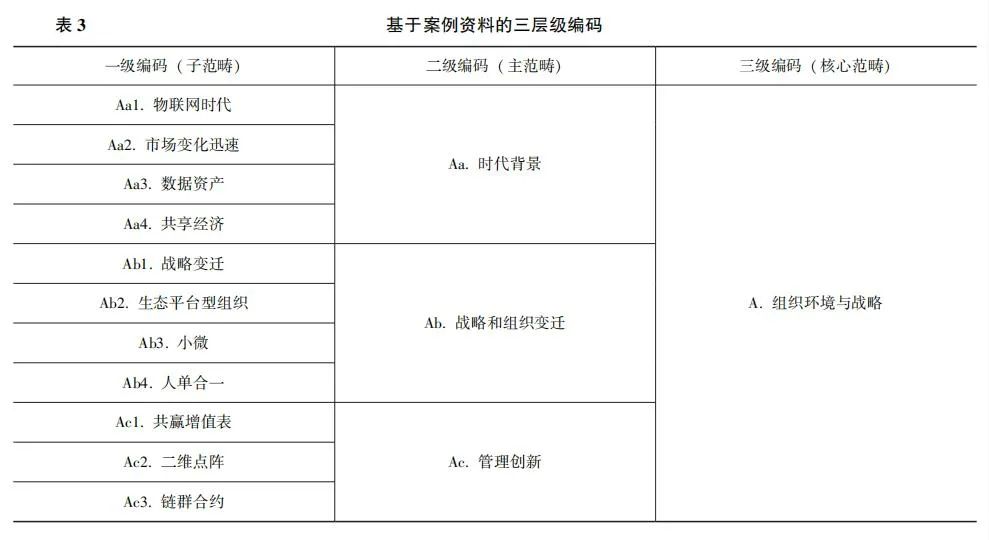
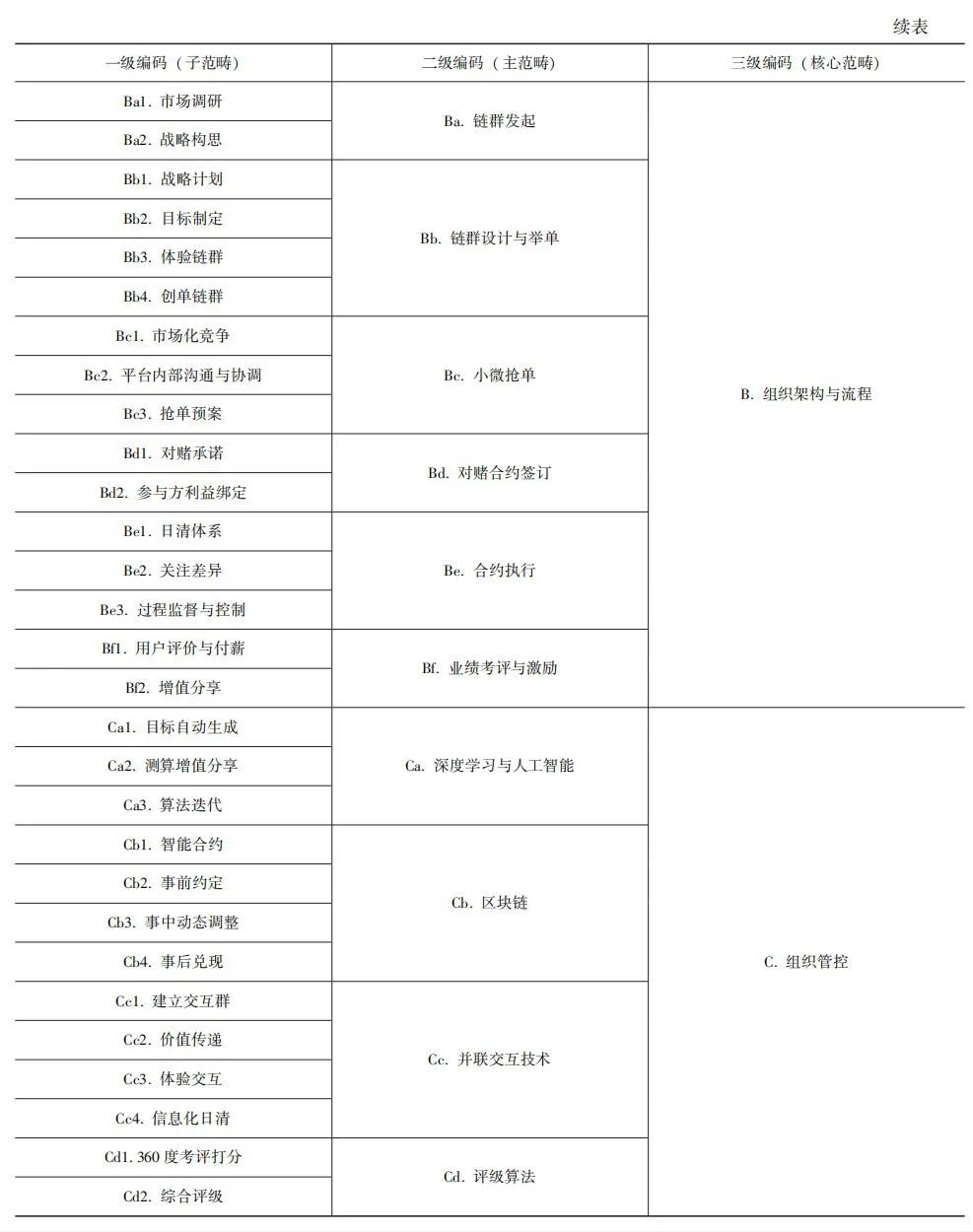
Throughout the coding process, this article strictly follows the category induction requirements of grounded theory to conceptualize and categorize interview data, thereby maintaining overall control over the data. To avoid the subjective opinions of coders affecting the results, this article particularly emphasizes confirming and verifying controversial concepts and categories with the case company and revising and reducing them in conjunction with relevant literature, ensuring the objectivity and accuracy of the analysis results.
Guided by the theoretical framework of “organizational environment and strategy – organizational structure and processes – organizational control,” the case analysis will delve into the following three key issues: the background of chain group contract emergence, the operational methods of chain group contracts, and the management control of this new model. Figure 1 illustrates the specific correspondence between the theoretical framework and the case analysis path.
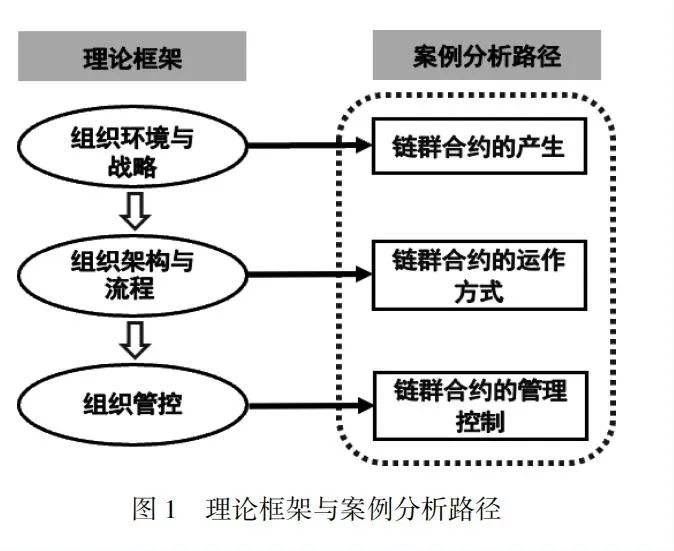
(1) Emergence of Chain Group Contracts
The core category of “organizational environment and strategy” mainly involves the era background of the emergence of chain group contracts and the fundamental conditions for their implementation. Under the core category of “organizational environment and strategy,” typical citations of the original entries are shown in Table 4.
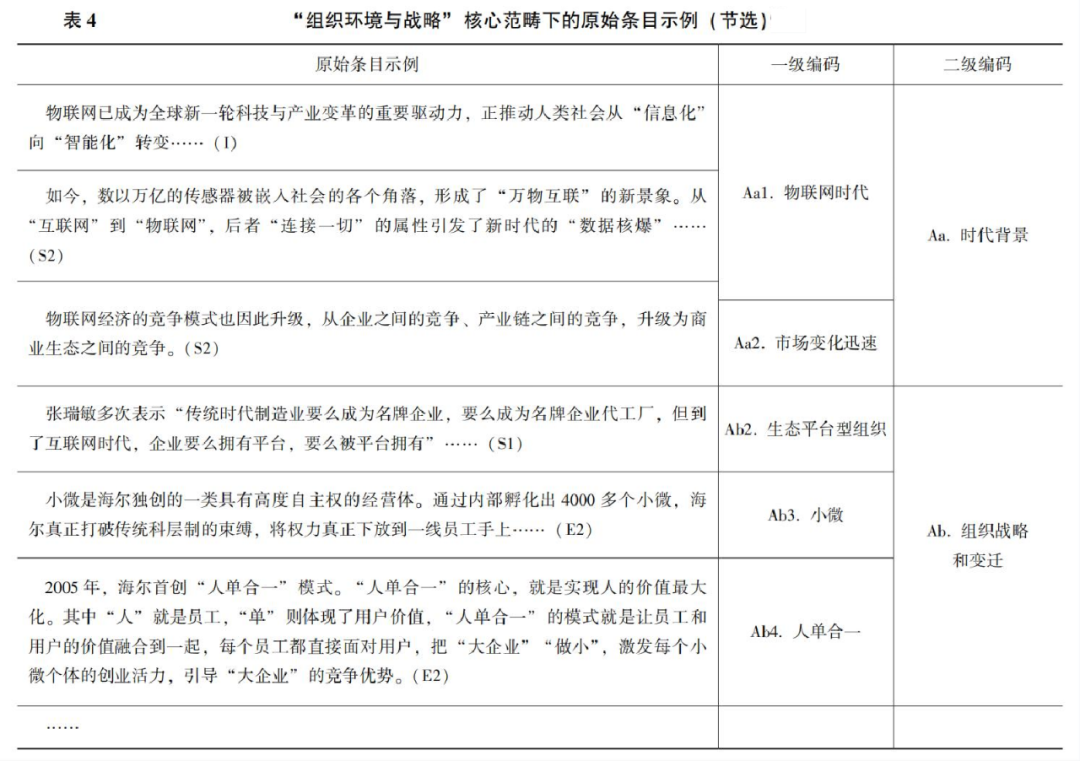
Case evidence shows that Haier Group’s transformation to an IoT ecological platform is not accidental but is based on a series of organizational changes. In 2005, in response to the challenges posed by the internet, Haier Group took “users” as the starting point and determining factor, implementing the “one person, one unit” management model, emphasizing that employees directly face users, create user value, and achieve their own value sharing in the process of creating user value.
Entering the IoT era, the situation of “everything is interconnected” has triggered a surge of data, providing enterprises with opportunities to gain deeper insights into user needs. By analyzing this data, enterprises can better understand user habits, behaviors, and needs, thus proposing comprehensive solutions based on scenarios. Therefore, competition has shifted from single product competition to scenario solution competition. In this context, enterprises need to achieve the goals of co-creation and mutual benefit through collaborative construction of scenarios or ecosystems.
To align with this trend, Haier Group underwent another strategic change in 2012, shifting from producing products and services to producing “makers.” The company implemented a “platform + micro” development model across the group and initiated a series of organizational changes to create an entrepreneurial platform. Haier Group dissolved traditional departments under the hierarchical structure and required employees to establish or join at least one micro-enterprise. Micros are autonomous operational units attached to the platform, focusing on a specific business or production operation link and collaborating with other micros inside and outside the platform through a freely chosen manner. The cooperative closed loops formed between micros for production and operation are called ecological chain micros, abbreviated as chain groups. By 2019, Haier had basically completed a series of internal organizational changes, decentralizing various decision-making powers in production and operation to frontline employees, officially announcing its entry into the strategic phase of ecological platforms.
As mentioned earlier, management within the IoT ecological platform faces two core issues. On one hand, how to coordinate the behaviors of various participants in the ecological platform to achieve alignment and create higher “ecological value”; on the other hand, how to reasonably measure the level of “ecological value” and fairly distribute the “ecological benefits” among partners.
Case evidence shows that Haier mainly measures “ecological value” through the “Win-Win Value-Added Table.” The Win-Win Value-Added Table is a report tailored for management accounting in the IoT era that combines financial and non-financial indicators, including six major elements: user resources, resource parties, total ecological platform value, revenue, costs, and marginal benefits. Its purpose is to dynamically monitor, evaluate, and drive the entire process of value creation, accurately measuring the value added by the ecological platform and showing how this value added is distributed and shared among stakeholders such as users, chain groups, resource parties, and Haier.
In terms of coordination within the ecological platform, Haier mainly relies on chain group contracts. Chain groups solve the coordination issues between micros within Haier and external partners, constructing an open and win-win ecosystem. Chain groups are spontaneously linked by micro nodes, and chain groups and enterprises are mutually beneficial and coordinate and govern through contracts.
The design of chain group contracts aims to effectively incentivize, constrain, and coordinate each node of the chain group, enabling each chain group team to mutually supervise and collaborate efficiently under the guidance of the common goal of quickly meeting user needs and achieving iterative user experiences. Chain group contracts clearly stipulate the phased goals for each specified node, the profit-sharing ratios after achieving goals, and the rights and responsibilities among different stakeholders, reflecting the management philosophy of “value-added sharing.”
With the continuous advancement of digital transformation, Haier has explored a chain group contract operating system based on blockchain technology. This system features “smart contracts, technology-driven, and full-process visibility,” ensuring that all information is shared in real-time, effectively reducing communication costs among micros, making it easier for previously long and complex management chains to reach effective cooperation, significantly enhancing collaboration efficiency among micros.
(2) Operation Methods of Chain Group Contracts – Taking the “Food Internet” as an Example
Chain groups essentially represent a transformation and innovation of traditional hierarchical organizational models, and the core category of “organizational structure and processes” encompasses the specific operational methods of chain group contracts. Under the “organizational structure and processes” category, original entries are shown in Table 5. Case evidence indicates that the operation of chain group contracts consists of six steps (as shown in Figure 2).
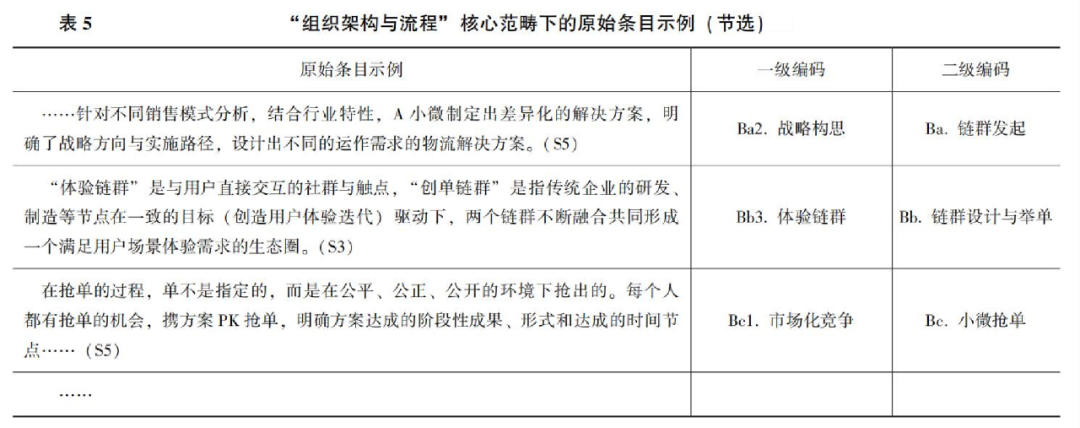
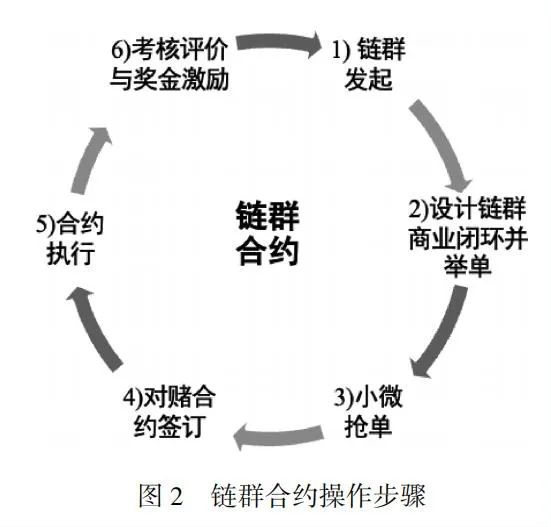
This article utilizes relevant materials from the initiation, formation, and operation processes of Haier’s “Food Internet” chain group contract to specifically illustrate the operational process of chain group contracts.
1. Initiation of Chain Groups
In this step, the chain group owner transforms user needs and initiates entrepreneurial projects. The “Food Internet” chain group contract was born from consumers’ growing demand for food quality, with quick and convenient pre-prepared foods increasingly favored in the market. Especially since 2020, due to the impact of the COVID-19 pandemic, consumer demand for pre-prepared foods peaked, leading to the emergence of the smart cooking chain group of the Food Internet.
Chain group owner Zhang Yu conducted in-depth research on various scenarios and widely collected user needs. He found that many customers in Beijing wanted to enjoy roast duck at home, but the process of making Beijing roast duck is complicated and only suitable for restaurants. Takeout would lose its freshness due to long delivery times. Therefore, Zhang Yu proposed the idea of “one-click roast duck,” where users can simply place a pre-prepared roast duck in the oven to cook authentic Beijing roast duck.
Based on this idea, Zhang Yu designed a platform for the Food Internet that interacts with users and resource parties, facilitating transactions and iterative experiences. This platform integrates top-tier ingredient suppliers and develops smart steam ovens with various cooking modes, forming a marketable solution for pre-prepared food ingredients.
Once the business idea was established, Zhang Yu needed to propose development goals for the chain group. Haier specially developed an online chain group contract system (chain group contract workbench), through which the entire project initiation, management, coordination, and profit distribution operate. When the chain group owner requests to initiate a new project, the system automatically calculates project goals based on indicators such as market capacity, market competitiveness, industry growth rate, and GDP.
Haier requires the chain group owner to benchmark against industry leaders and set leading goals. For instance, the annual sales volume of the industry leader is about 3 million units, the second is about 2 million units, and the third is about 1 million units. The chain group sets its target based on roast duck sales, ultimately determining a leading goal of 1 million units in annual sales, aiming to enter the industry’s top three. Subsequently, based on market capacity, consumer habits, industry scale, and team integration capabilities, further detailed targets are set, including a goal of 20,000 users and 20 million yuan in ecological income.
2. Designing the Business Closed Loop and Initiating Orders
In this step, the chain group owner designs specific nodes on the chain group based on market and operational needs and simultaneously publishes opportunities for order grabbing on the chain group workbench. The chain group is divided into two parts: the experience chain group and the creation chain group. The experience chain group focuses on the market end, directly interacting with users to obtain user needs and conveying them to the creation chain group; the creation chain group specifically implements user needs sourced from the experience chain group. The chain group owner needs to clarify specific requirements for each node in both the experience and creation chain groups based on the overall project objectives and propose corresponding goals. Considering the positive externality characteristics of the ecological platform, the chain group owner also needs to clarify the sharing space and proportions of ecological value-added benefits for each node in advance. After completing the planning for all chain group nodes, the chain group owner opens the order in the system, publicly publishing the demand information for each node and selecting suitable partners to form the chain group through an open bidding process.
In August 2020, Zhang Yu officially initiated the order on the chain group contract workbench, establishing the smart cooking chain group. He designed relevant business nodes based on operational needs and published opportunities for nodes to grab orders on the chain group workbench. In the initial order initiation, Zhang Yu designed nearly 20 nodes for the “Food Internet” chain group, including sales nodes in the experience chain group and production, design, marketing, procurement, quality control, and other nodes in the creation chain group.
3. Order Grabbing by Micros
In this step, numerous platform micros, driven by high value-added and high sharing, grab orders on the work platform. During order grabbing, micros need to submit corresponding order grabbing plans, mainly including specific objectives and action plans related to that node. For nodes in the creation chain group, micros must also provide specific solutions for production and operational links based on the chain group owner’s requirements. During the order grabbing process, micros need to confirm that their qualifications and capabilities are sufficient to meet the order requirements and ensure that they have adequate human, material, and financial resources to support smooth cooperation within the chain group.
This process serves as a two-way communication and coordination mechanism between the chain group owner and micros. On one hand, when micros observe numerous order grabbing opportunities on the platform, they can assess whether to grab an order based on their qualifications, production capacity, and other conditions. If the order demands significantly exceed the production capacity of similar micros on the platform, micros may independently decide whether to expand their capacity to secure more market share. On the other hand, the chain group owner can assess the overall planning of the chain group based on the order grabbing situation. If multiple parties grab the same order, the chain group owner can evaluate the grabbing proposals and select the best; if a specific chain group node receives no orders, it indicates a problem with the planning of that node, prompting the chain group owner to make adjustments. In this process, the chain group contract automatically facilitates the allocation and coordination of resources within and outside the organization.
In the order grabbing phase of the “Food Internet” chain group contract, a total of 26 micro nodes entered the “Food Internet” chain group, as shown in Figure 3, with 16 nodes belonging to the experience chain group, primarily responsible for market sales, and the remaining 10 nodes belonging to the creation chain group, mainly responsible for production, research and development, design, etc.
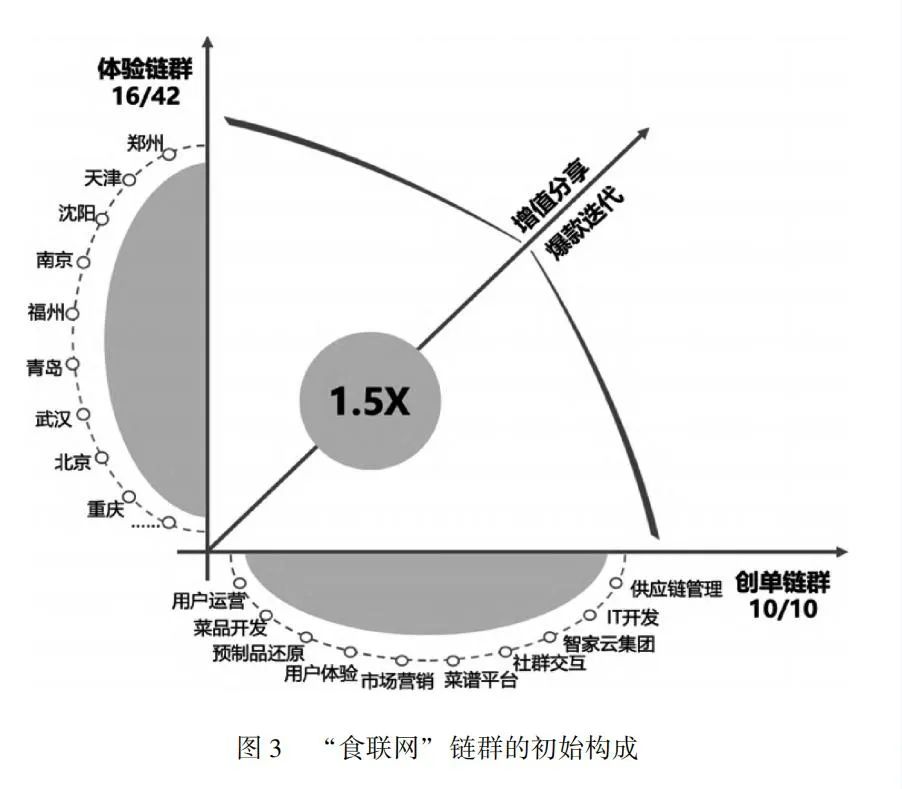
4. Signing of the Betting Contract
Before the chain group contract is formally established, each node must sign a betting contract and pay a betting fee. The betting fee is mutually constrained by the objectives and value-added sharing. Once the chain group contract is established, it cannot be arbitrarily changed, and all parties are responsible for the same objective. If any node fails to deliver the promised results, it will affect the achievement of the common goal and the benefits of other nodes. Consequently, the nodes of the chain group contract mutually compel each other to collaborate proactively without the need for third-party intervention. In this process, the chain group owner sets different sharing ratios for each node based on the goals and contributions undertaken by each node. If participants have objections regarding the sharing ratio, they can negotiate with the chain group owner or choose to exit the chain group. The market-like relationship of free choice between the chain group owner and nodes significantly regulates the behaviors of both parties in the contract.
With the formation and signing of the betting contract for the “Food Internet” chain group, the chain group continues to optimize through multiple iterations and upgrades. For instance, the initially designed “Food Internet” chain group only met the basic needs of users wanting to enjoy Beijing roast duck at home. Subsequently, as demand changed, the chain group introduced improved versions like low-fat roast duck, continually exploring the applications of various pre-prepared ingredients and scenarios. Throughout this process, the chain group contract also underwent continuous iterations, with the number of nodes increasing from the initial 26 to 63, and then to 66, reflecting the self-driven role of user experience and market orientation on the chain group.
5. Execution of the Contract
Haier promotes the execution of chain group contracts through an all-employee daily budget system, thus realizing the concrete implementation of the strategy. The daily budget system includes the performance assessment of last week’s work, the budget lock for this week’s work, and the budget planning for the next six weeks. With the help of blockchain technology, the information system for chain group contracts breaks down monthly goals to daily levels and displays the actual completion status of goals in real-time. Each node in the chain group can see the completion status of other nodes, serving as a mechanism for mutual supervision and assistance, promoting the achievement of overall objectives. The chain group also establishes an online interactive platform for user experience, achieving visibility for all and enabling rapid responses to user needs, thereby enhancing operational efficiency and user experience.
6. Evaluation and Incentive Mechanisms
User payment and value-added sharing are the core concepts of the chain group, closely linking the value created for users with the value that can be shared. After the contract period, if the chain group’s goals are achieved, the system automatically allocates the pre-agreed reward amounts to each employee at every node. This ensures that each node in the chain group is organically connected, focusing on the overall value added, input-output, and profit goals of the chain group rather than solely on the assessment goals of individual nodes. For nodes that consistently underperform over the long term, the system automatically quantifies the opportunity losses incurred by the chain group. For example, if the dish development node’s betting goal is to complete two iterations of the Beijing roast duck dish, but only one iteration is completed, the system measures the opportunity loss. If the competitiveness of that node does not improve over time and it remains underperforming, the node will be reopened to introduce more competitive participants, ensuring that goals are met.
Additionally, the chain group contract system also adopts a 360-degree performance evaluation approach, requiring mutual evaluations among all participants in the chain group based on a star rating standard, including evaluations from the chain group owner to each participating node, mutual evaluations among participating nodes, and evaluations from participating nodes to the chain group owner. The platform summarizes the evaluation results based on a rating algorithm, ultimately forming comprehensive evaluations for each micro and the chain group owner. Within the IoT ecological platform, this mechanism generates a “market reputation” for each independent participant, providing important evidence for the future formation of chain group contracts between the chain group owner and micros.
(3) Management Control under Chain Group Contracts – Empowerment through Digitalization and Intelligence
In the execution of chain group contracts, Haier Group fully utilizes digital and intelligent technologies to effectively address various planning coordination and management control issues brought about by this organizational model, achieving satisfactory control results. The core category of “organizational control” mainly encompasses how chain group contracts utilize modern information technology to empower management control. Under the core category of “organizational control,” typical citations of the original entries are shown in Table 6.
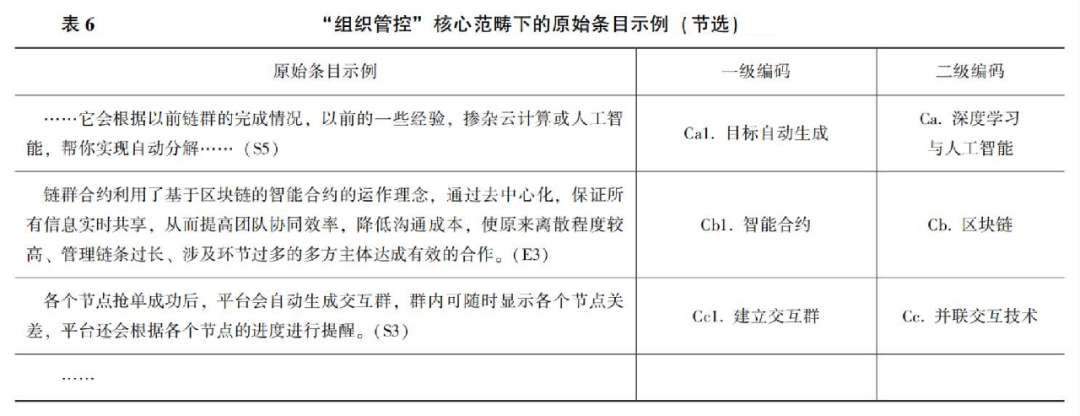
Case evidence indicates that the empowerment of organizational control through digital and information technology in chain group contracts is mainly reflected in four aspects.
1. Utilizing Deep Learning and Artificial Intelligence to Empower Performance Goal Setting
Setting reasonable performance goals has always been a challenge in management work. When enterprises use budget targets as standards for performance evaluation and rewards, grassroots managers with specialized knowledge and information may intentionally set lax budgets to lower the difficulty of achieving targets. In chain group contracts, Haier actively utilizes deep learning and artificial intelligence technologies to enhance the accuracy and rationality of goal setting. Specifically, Haier adopts a dual target system that sets both bottom-line and leading goals to alleviate issues of budget slack and incentive distortion. The bottom-line goal is the target that the chain group owner and each micro node must achieve within an accounting period; if it is not achieved, the chain group needs to rectify or even disband; the leading goal refers to the higher target level that chain group participants can actively pursue beyond the bottom-line goal.
The bottom-line goals are set using a “top-down” approach. For this purpose, Haier has developed a system based on big data and deep learning. This system uses deep learning on the data accumulated by Haier over the years in the white goods industry to train an algorithm capable of automatically calculating future sales volumes for products. Technicians only need to input various historical data and market environment information related to the product into the algorithm, which can automatically match different levels of performance goals. The platform typically selects second to fourth level targets as bottom-line goals. The leading goals, on the other hand, are set through a “bottom-up” approach, allowing the chain group owner and each participating node to propose higher target levels they wish to pursue above the bottom-line goals. The difference between the bottom-line and leading goals represents the value-added sharing space of the chain group. The higher the difficulty (level) corresponding to the leading goal, the higher the value-added sharing rate that chain group participants can obtain. By designing the dual target system, Haier integrates the “top-down” and “bottom-up” approaches in budget target setting, ensuring that the budget preparation aligns with the overall strategic goals of Haier Group.
2. Utilizing Blockchain Technology to Empower Strict Execution of Budget Plans
Failure to strictly execute plans is another common shortcoming in traditional budget management (Cai Jianhui, 2009). Many enterprises find that budgets deviate significantly from actual situations, making it impossible to strictly execute budgets, let alone use them as benchmarks for evaluating managers’ performance. Haier cleverly integrates blockchain technology into chain group contracts, exploring an execution system characterized by “smart contracts, technology-driven, and full-process visibility.” Utilizing distributed ledger technology, Haier decentralizes the signing and execution processes of chain group contracts, allowing the entire process to be automatically completed through an intelligent platform. Once the chain group contract is formed, no node can arbitrarily change it. During execution, Haier ensures strict execution of budget targets through an all-employee daily clearing system. Once the chain group contract is established, Haier’s AI system automatically breaks down node targets into daily levels and can display the daily target execution variance in real-time. Each node in the chain group can see the daily completion status of other nodes, allowing for mutual supervision and assistance, promoting the achievement of overall objectives.
Through this intelligent execution system, Haier effectively overcomes the issues of lax execution in traditional budget management. The formulation, execution, and monitoring of budget targets achieve full visibility, improving the efficiency and accuracy of budget management. This also enables enterprises to better integrate budget targets with performance evaluations, encouraging employees to pay attention to and prioritize budget execution, making budget management a powerful management tool.
3. Utilizing Parallel Interaction Tools to Empower Integration of Business and Finance
Integration of business and finance refers to a management model that combines and merges financial management with business operations, aiming to enhance collaboration between financial management and business operations and improve overall operational efficiency and accuracy of business decision-making. In traditional budget management, budget execution and control are often independently handled by the finance department, while business departments may lack involvement and accountability in budget execution. This can lead to inadequate enthusiasm from business departments in executing budgets. Additionally, traditional budget management often focuses on financial indicators such as revenue, costs, and profits, neglecting non-financial indicators like customer satisfaction and market share. This may result in a disconnect between business and financial goals, hindering the realization of business-finance integration.
Haier actively addresses this challenge by developing an internal parallel interaction tool called iHaier (similar to DingTalk or WeChat Work) and effectively integrating it with the chain group contract platform, significantly enhancing the level of business-finance integration in the execution of chain group contracts. Once the chain group contract is formed, the platform automatically generates discussion groups on the iHaier platform for timely information exchange and close collaboration among participants. This comprehensive communication and cooperation help establish a close connection between the finance department and business departments, jointly striving to achieve budget targets.
During the execution of the contract, the platform automatically pushes daily targets and execution variances to each node. This real-time feedback mechanism allows business departments to more acutely focus on budget execution status and proactively make adjustments, better aligning with actual business conditions. At the same time, the experience chain group nodes responsible for front-end sales can collect a wealth of user experience data, such as user satisfaction and customer complaints. The intelligent system automatically integrates this information and pushes it to the production and operation nodes at the back end on the iHaier platform, assisting in product and service improvements and iterations. This flow and integration of data greatly promote collaboration between business and finance departments, ensuring that budget targets are set and executed in closer alignment with user needs and market changes.
4. Utilizing Rating Algorithms to Empower Performance Evaluation and Assessment
The linkage between budgets and performance evaluations is an important guarantee for budget execution. Only by integrating budgets with performance evaluations can enterprises ensure that managers have sufficient motivation to prioritize and execute budgets. The chain group contract system greatly enriches the connotations of budget performance evaluation, not only focusing on whether the participating parties of the contract achieve pre-established objectives and share value-added benefits but also requiring all participants in the chain group to mutually evaluate their collaboration experiences. This evaluation mechanism provides a more comprehensive reflection of the performance and contributions of participants during the collaboration process, no longer limited to the achievement of financial indicators.
Specifically, at the end of the contract period, the chain group owner needs to evaluate each micro node based on completion status and quality; micro nodes must also mutually evaluate their collaboration experiences; and micro nodes must evaluate the chain group owner’s coordination capabilities. The evaluation uses a star rating system, similar to mutual evaluations between buyers and sellers on internet shopping platforms. Haier has developed an algorithm to comprehensively summarize the evaluation results, ultimately forming comprehensive evaluation scores for each micro and the chain group owner. This mechanism generates a “market reputation” for each independent participant, effectively constraining the behaviors of each participating node in the collaboration process and providing important evidence for the future formation of chain group contracts between the chain group owner and micros.
Fama (1980) pointed out that the market reputation of professional managers can affect the returns they obtain from future employment contracts. In fact, the pursuit of higher star ratings by each participant in the chain group is also a pursuit of higher future returns; future chain group contracts will determine the remaining sharing ratios based on the reputation and star ratings of different participants to ensure the overall output performance of the chain group.
Manufacturing enterprises in China are facing the trend and challenges of transforming into IoT ecological platforms. This article delves into the important role of chain group contracts in internal collaboration within Haier Group against this backdrop. The study finds that chain group contracts can effectively facilitate communication and coordination among different units within the ecological platform, effectively addressing the challenges posed by the ecological platform strategy for organizational control. With the support of modern information technology, the potential of chain group contracts is further unleashed, specifically reflected in four aspects: chain group contracts utilize deep learning and artificial intelligence to empower goal setting, utilize blockchain technology to empower contract execution, utilize parallel interaction tools to empower integration of business and finance, and utilize rating algorithms to empower performance evaluation.
This case study summarizes Haier Group’s successful experience in implementing management control within the IoT ecological platform, introducing management accounting thinking into the research on ecological platform strategic transformation, contributing to further expanding and enriching the academic community’s overall understanding of enterprise ecological platform strategic transformation. The theoretical analysis in this article not only helps reveal the essence of this new management tool, but also promotes the deep integration of intelligent management tools with traditional management accounting frameworks, laying a solid foundation for the future development of management accounting theory and practice. On a practical level, the presentation of this case provides operational guidance for other ecological platform enterprises to learn from Haier’s experience, fully utilize intelligent management tools, enhance internal collaboration efficiency, and strengthen the empowering effects of platforms.
It is worth noting that although this article strives to maintain scientific rigor during the research process, there are still some shortcomings in the analysis process. Firstly, there may be biases caused by subjectivity during the grounded theory coding process. Although this article has adopted team discussions, “back-to-back” coding analysis, and multiple rounds of discussions to reduce subjectivity during coding, due to the limited experience of the research team members in grounded theory methods, it is still inevitable that shortcomings exist in actual operations. Secondly, the research data in this article mainly comes from a single case of Haier Group. Although this case is highly representative, the universality and external validity of the results from a single case study may be limited. Future research could consider adopting multiple case studies to more comprehensively verify and expand upon the conclusions of this study.
Recommended Hot Articles
Performance Evaluation and Management Accounting Practice Development Training Course for Public Hospitals in the New Era andThe Second Public Hospital Management Accounting Forum Held in Shanghai
The 2019 Seminar on Management Accounting in Chinese Universities with Chinese Characteristics Held at Shanghai University of Finance and Economics
Construction of the Basic Database for Management Accounting Research in China Officially Begins
The First Public Hospital Management Accounting Forum Held at Shanghai University of Finance and Economics
Shanghai University of Finance and Economics Hosts the China Management Accounting Forum
Expert Opinion | The Impact of VAT Deepening Reform on Enterprises










